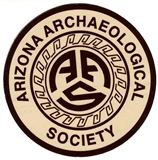

Prehistoric Sites -- An Introduction
This section pertains to restoration, stabilization, reconstruction, and preservation of prehistoric sites. Underlined terms have definitions in the Glossary page.Prehistoric sites are those inhabited prior to written records. Prehistoric sites are excavated for various reasons. Whatever that reason may be, a decision is required as to what action should be taken once the architectural features are exposed. What the future use or purpose of the site will be is the first question that must be answered. If the site was excavated due to impending highway or building construction, any remaining architectural features may be bulldozed or backfilled. But if it is to be an interpretative and public use site, a comprehensive stabilization program must be established.
Prehistoric structures tend to be fragile, and once exposed to the various agents of deterioration will soon erode and collapse. These structures were usually constructed with whatever building material was available at or close to the site. Wall types include: Jacal, post-reinforced, coursed caliche/adobe, and masonry. The stones in a masonry wall might be laid with a mud mortar or dry laid.
Comprehensive ruin stabilization involves careful planning to place a prehistoric feature in good structural condition and to preserve its appearance following excavation. Every effort is made to satisfy the requirements of durability and integrity. It differs from restoration or reconstruction in that no attempt is made in the stabilization process to restore the structure to its original appearance.
EXAMPLES OF PREHISTORIC PROJECTS